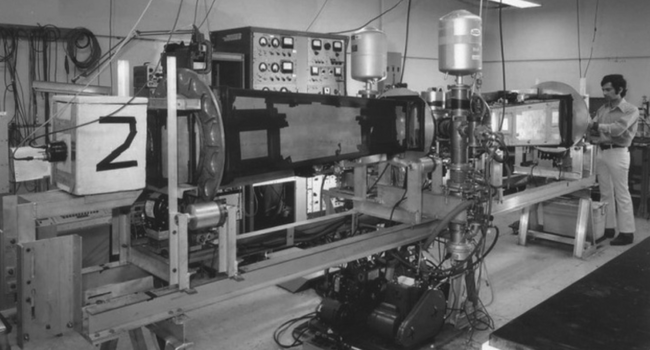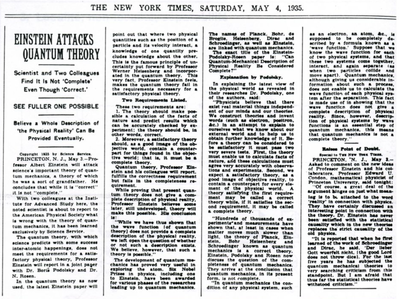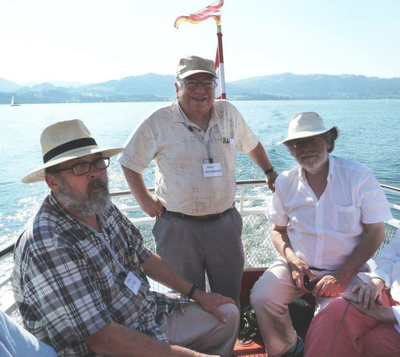«The Einstein-Podolsky‒Rosen paradox is resolved in the way which Einstein would have liked least»
EPR
Einstein-Podolsky-Rosen correlations or EPR for short, embed the essence of quantum mechanics mysteries.

Genesis of EPR

The birth of the EPR paradox is best described in Ref. [1] where it is apparently Rosen who, from his own work with entanglement in the Hyrogen atom, commented to Einstein difficulties in interpretations, who immediately understood this was in his favor in the Bohr-Einstein debates. Podolsky joined the discussion and proposed to write a paper, which he (Podolsky) did and later passed to the New York Times ahead of publication, with the result of infuriating Einstein who, Peres says, would no longer speak to him.
Error: String exceeds 1,000 character limit.—Kelly Devine Thomas in Ref. [2]
A clean version of the said New-York Times article is difficult to find although snapshots can be, for instance from this collectible which has good high-resolution extracts but not of the full text, or on the opposite,full-text versions tough to decipher at places though:

The content is not inaccurate, although this provides an early example of a frustrating experience with media coverage.
Bell's inequalities
Such correlations are challenged by Bell's inequalities.
The Bell inequalities can be recast in the so-called CHSH inequality form.
GHZ

Adan Cabello had them in the correct order.
Links
- Sciencenews.org
- EPR on Wolfram Alpha.
- Nice report from a conference with a photo of GHZ together.
References
- Proposed Experiment to Test Local Hidden-Variable Theories. J. F. Clauser, M. A. Horne, A. Shimony and R. A. Holt in Phys. Rev. Lett. 23:880 (1969).
| |||||||||||||
